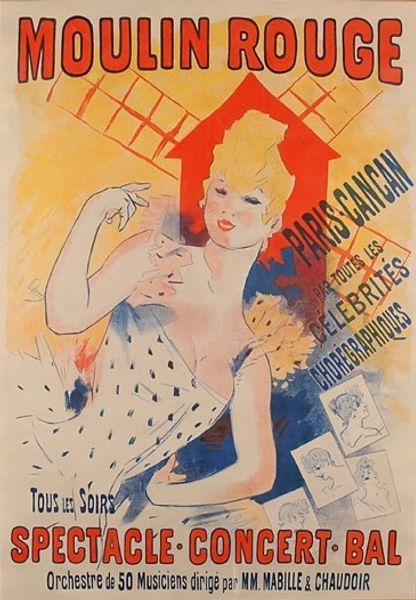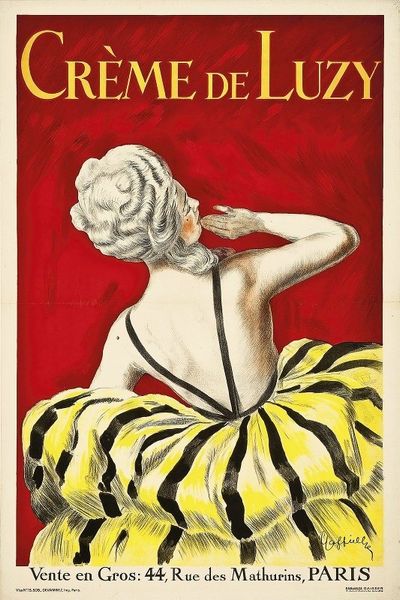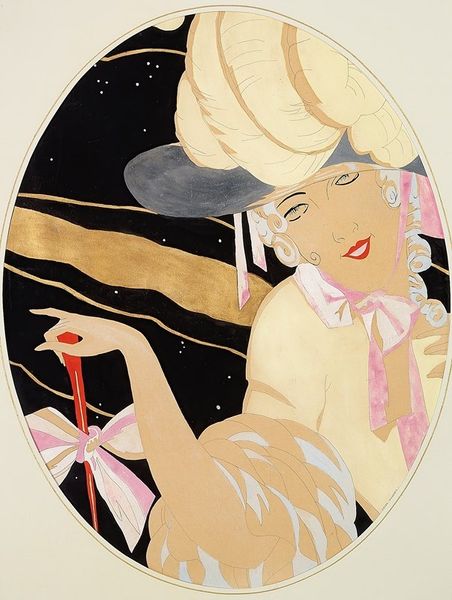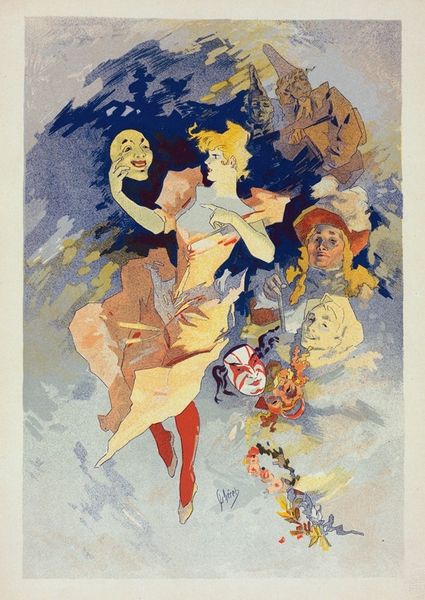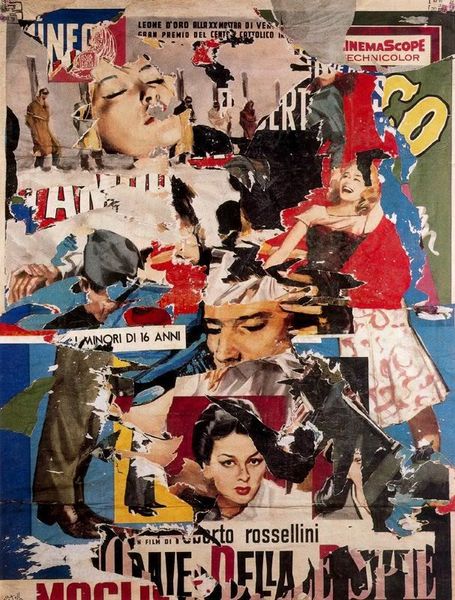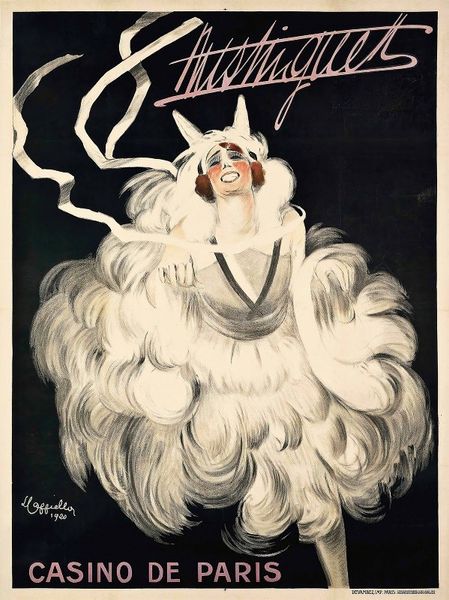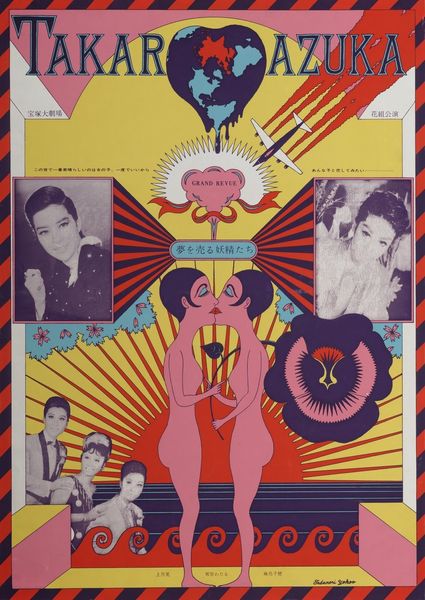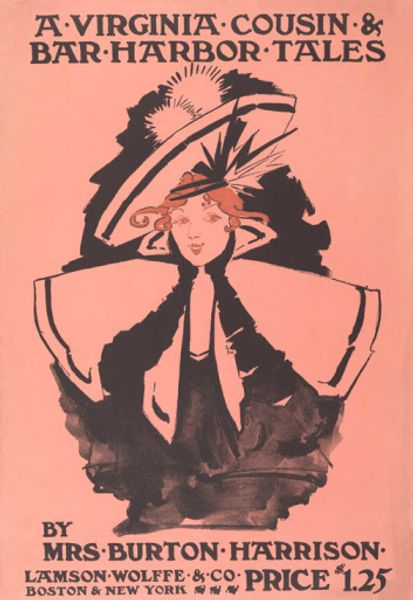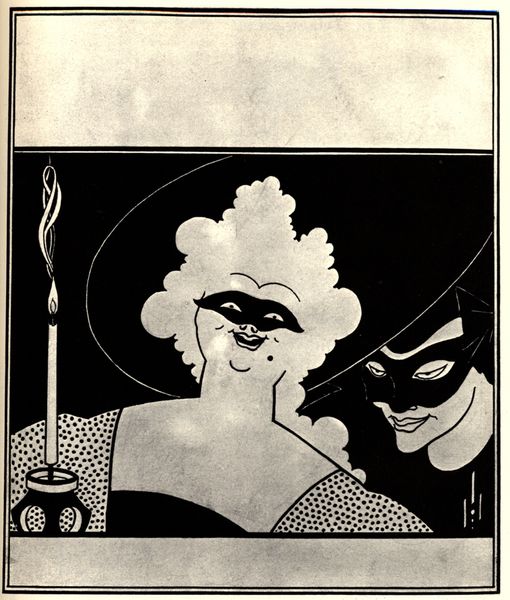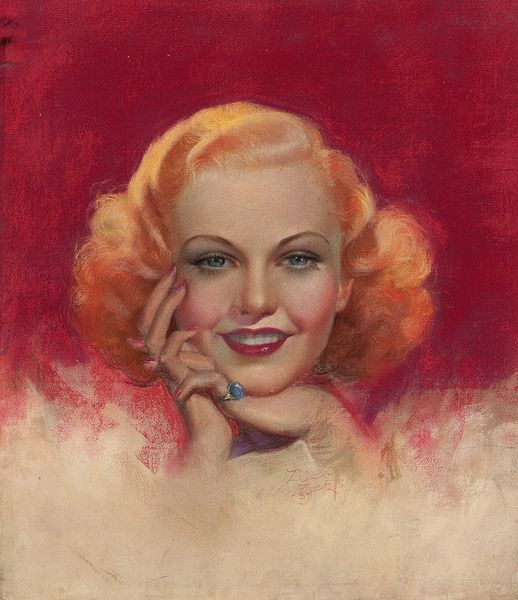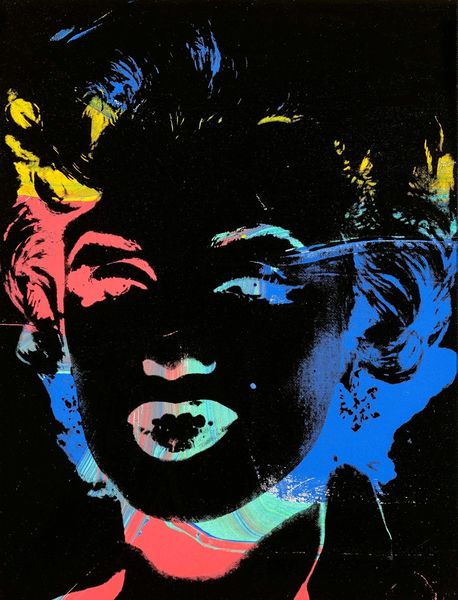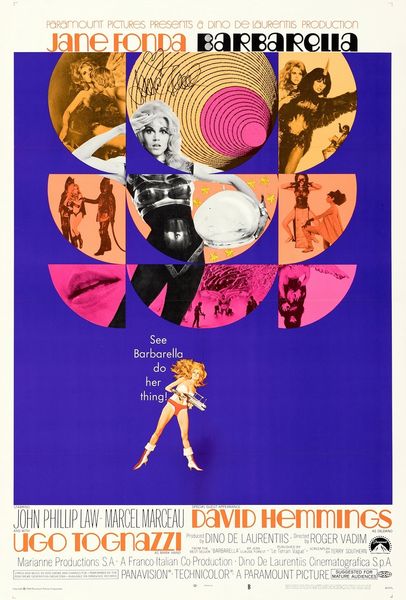
Copyright: Mimmo Rotella,Fair Use
Curator: Immediately, I'm struck by the raw texture. All those layered paper fragments create a distressed surface that really clashes with Marilyn's serene face. Editor: That’s right. The piece before us is titled "Marilyn" by Mimmo Rotella, created in 1963. It is a stunning example of décollage, a technique where the artist tears, shreds, or otherwise manipulates pre-existing posters to create a new image. This one appears to employ mixed media of photography and collage too. Curator: Décollage is perfect, because you feel the tension between icon and cultural artifact. In its day, Rotella's art offered potent social commentary, challenging the cult of celebrity and the mass media's role in constructing identity. The torn posters speak to the ephemeral nature of fame, right? Editor: Exactly. And the contrast works so well compositionally. Notice how Rotella strategically uses those vibrant, chaotic scraps of color and typography to frame Marilyn's classic beauty, her gentle smile and closed eyes against the ravages of consumerism? Curator: It's interesting to consider how Marilyn herself embodied this tension, as a vulnerable woman packaged and sold as a sex symbol. The rips in the poster feel like an assault on her image, even violence against her iconic status. Editor: The scale, I believe this being mural size, would amplify this feeling. It implicates us, the viewers, in this cycle of consumption and deconstruction. You stand there and can’t ignore that this piece is in a dialogue about fame and identity within post-war society. Curator: Absolutely, there's an implicit critique of the society that both created and then arguably destroyed Marilyn Monroe. It’s a statement about appropriation of imagery. Editor: I agree wholeheartedly. This particular piece exemplifies not only Pop Art’s preoccupation with celebrity culture, but it offers an elegiac meditation on its inherent fragility through very literal and physical manipulation. Curator: Looking at this piece again, I’m now stuck on how Rotella made art a participatory medium, right in the streets, reflecting culture on the surfaces of the city itself. It is very effective. Editor: For me, Rotella's "Marilyn" provides a visual and intellectual experience—something deeply compelling in its bold use of texture, contrast, and cultural commentary.
Comments
No comments
Be the first to comment and join the conversation on the ultimate creative platform.
